The Windup Caterpillar #mechanical #itp #fabricating-mechanical-automatons
This year, I am starting a new chapter of my life as a graduate student in the Interactive Telecommunications Program (ITP) at Tisch School of Arts, New York University. As I pursue my graduate studies here, I will be sharing lots of updates on this blog. One of the courses that I am taking is called Fabricating Mechanical Automatons *Batteries Not Included.
Back in 2017, when I was researching autonomous drawing machines for my undergraduate capstone project, I found out about automatons for the first time. In particular, I was fascinated by the automatons that either write or draw based on a selection of predetermined sequences of movements. Now that I am in grad school, I can’t be more excited to take a class on making automatons. I believe this course will help me build a solid foundation for designing and fabricating mechanical systems. It will equip me with a whole new set of skills that help expand the creative possibilities that I can explore.
After doing a bit more research on automatons, I still find Jaquet-Droz automata to be the most inspiring. In particular, the programmability of the writer, one of the three automata built by the Jaquet-Droz family, was the most astonishing. Even though I understand that the earliest computers were mechanical, it still feels very different when knowing similar machines were used for art. In this class, programmability will be one area of mechanical automatons that I am planning to experiment with.
As a part of the first homework for this class, I set out on a quest last Sunday for a small, inexpensive mechanical toy around downtown Brooklyn. Two of the most common types of mechnanical toys that I found were windup vehicles and DIY mechanical kits. The latter tend to be bulky, complex, and out of my budget, whereas the former was a bit too basic. After visiting a variety of different stores, a cartoony windup caterpillar caught my eye. I bought it for about 8 bucks at a gift shop called Exit9 Gift Emporium. I really like it because of its simple cartoony look and its segmented body (more mechanical components to learn from). There were also some windup walking pigeons in the same store, but the art style was a little bit too detailed to my taste (though I am really interested in how the walking mechanism works, hopefully one of my classmates will buy something similar).
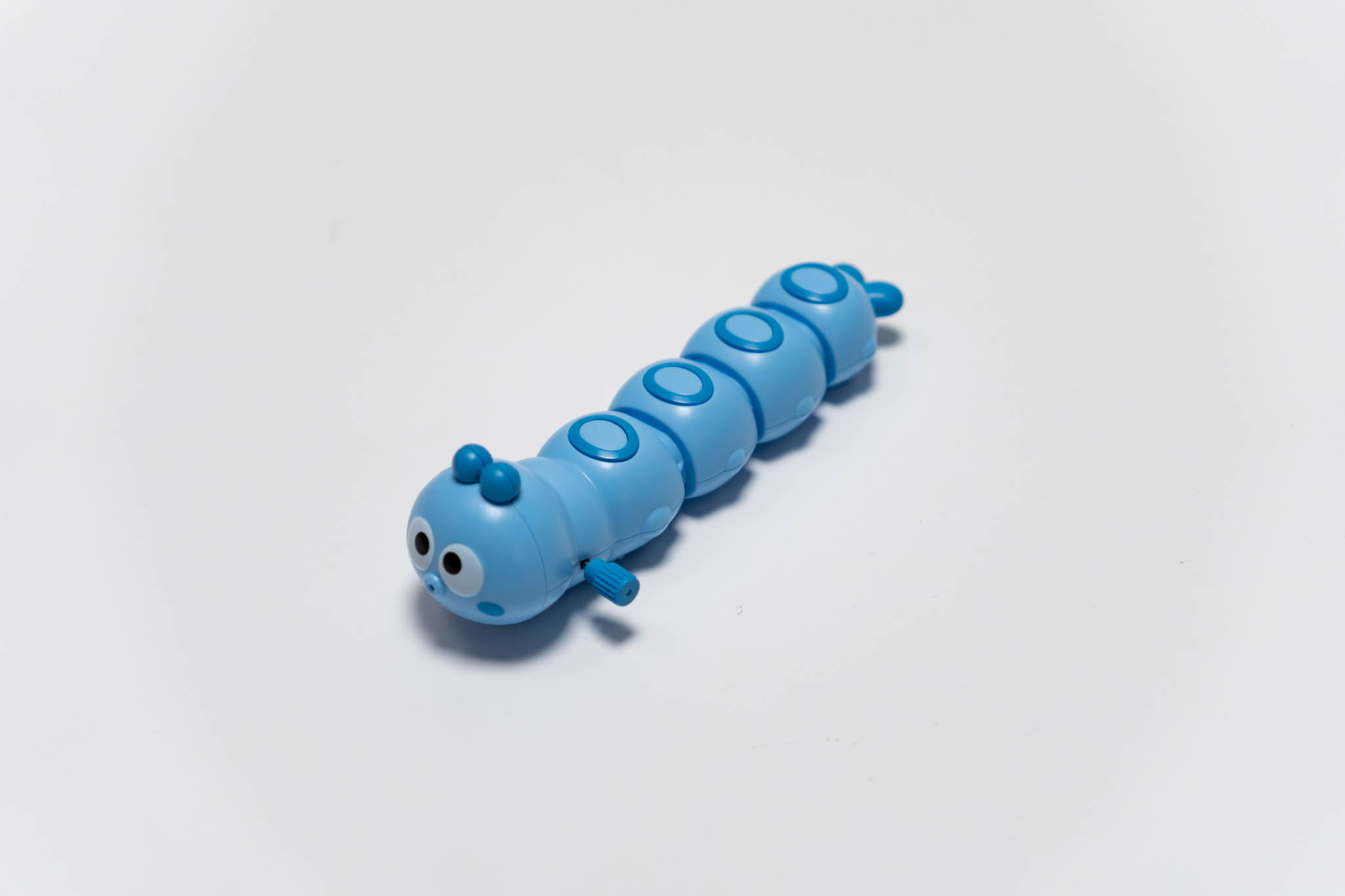
Here are some orthographic photos of this lovely toy:
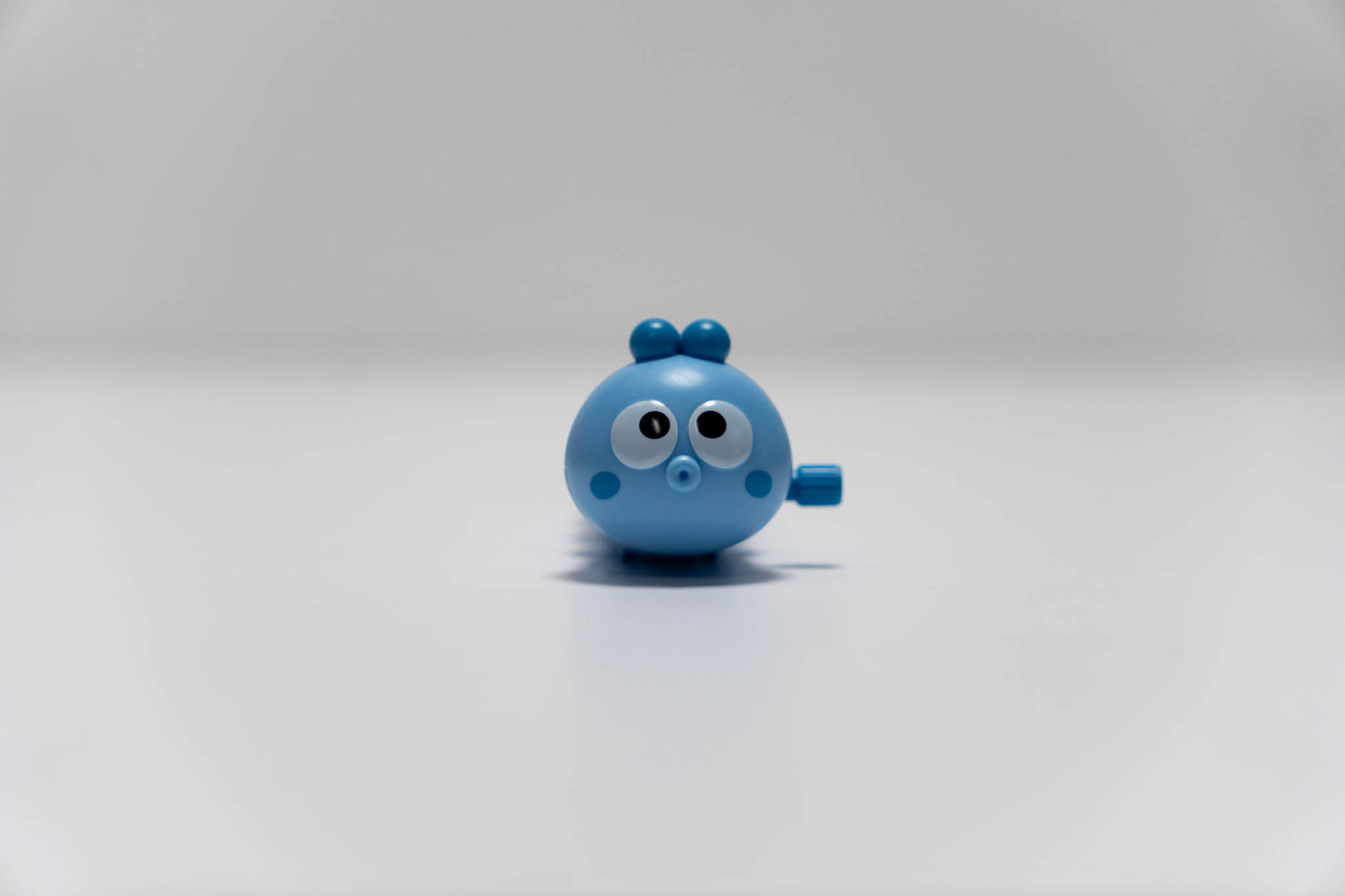 |
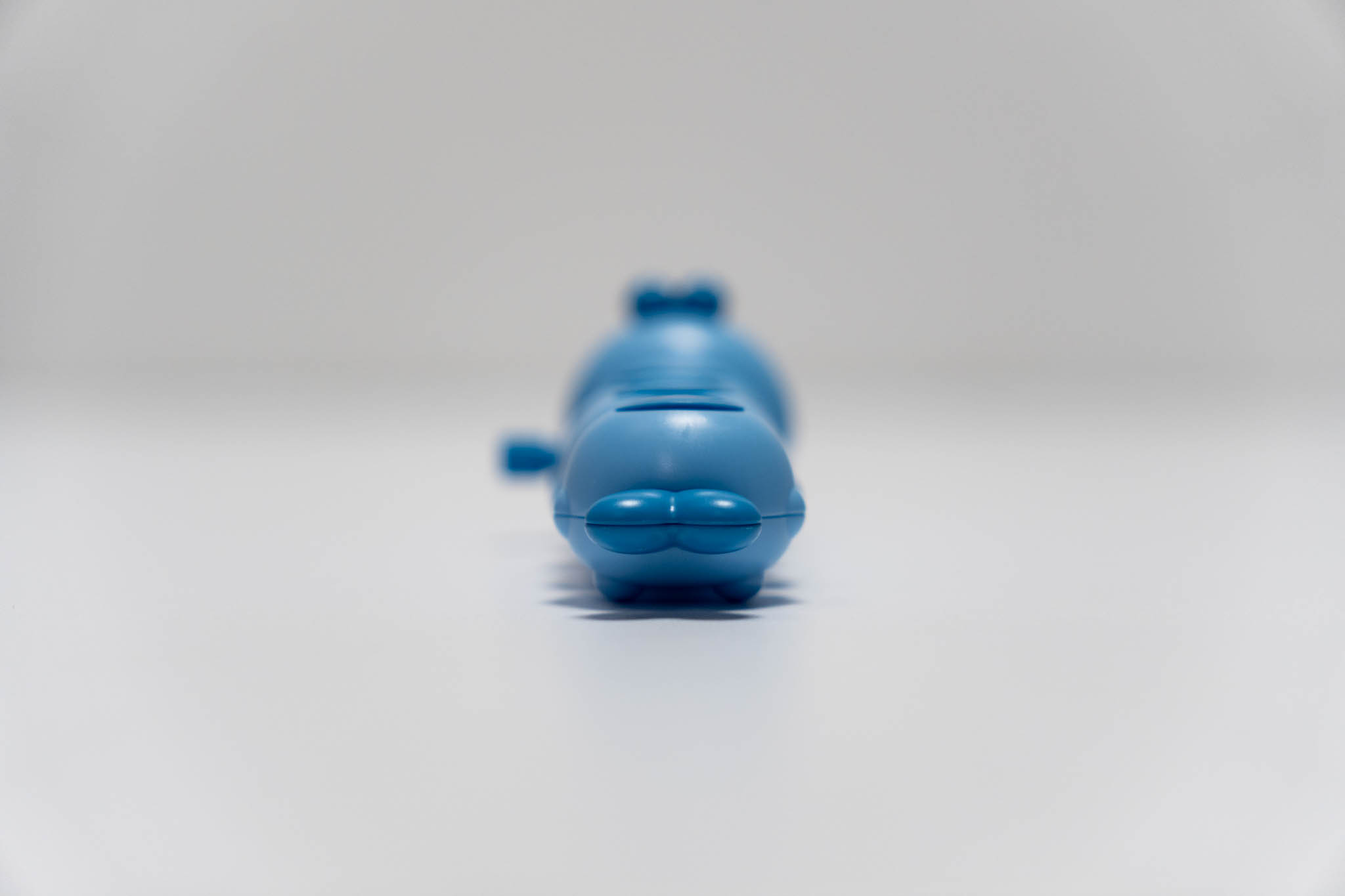 |
|---|---|
| Front View | Back View |
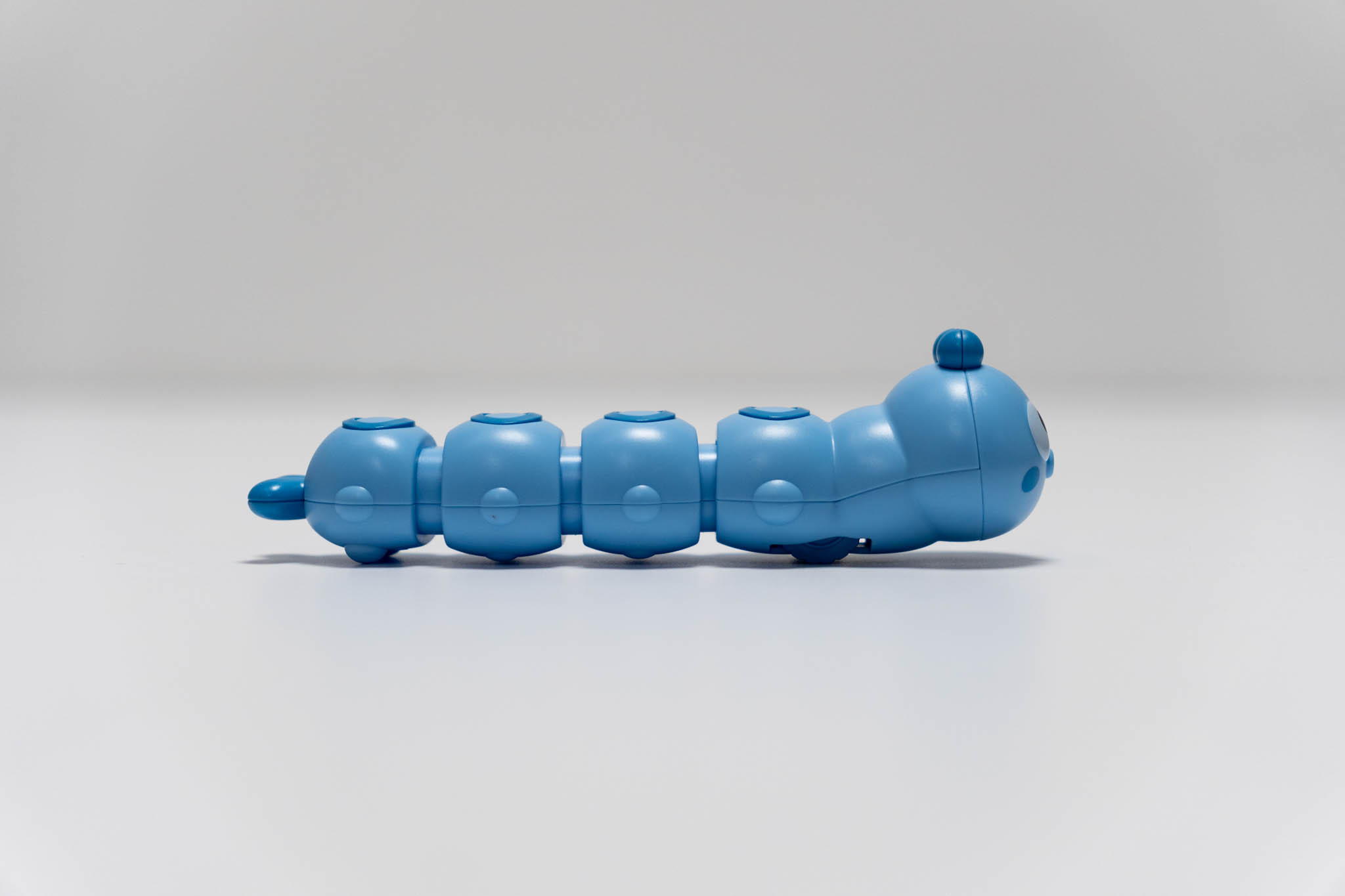 |
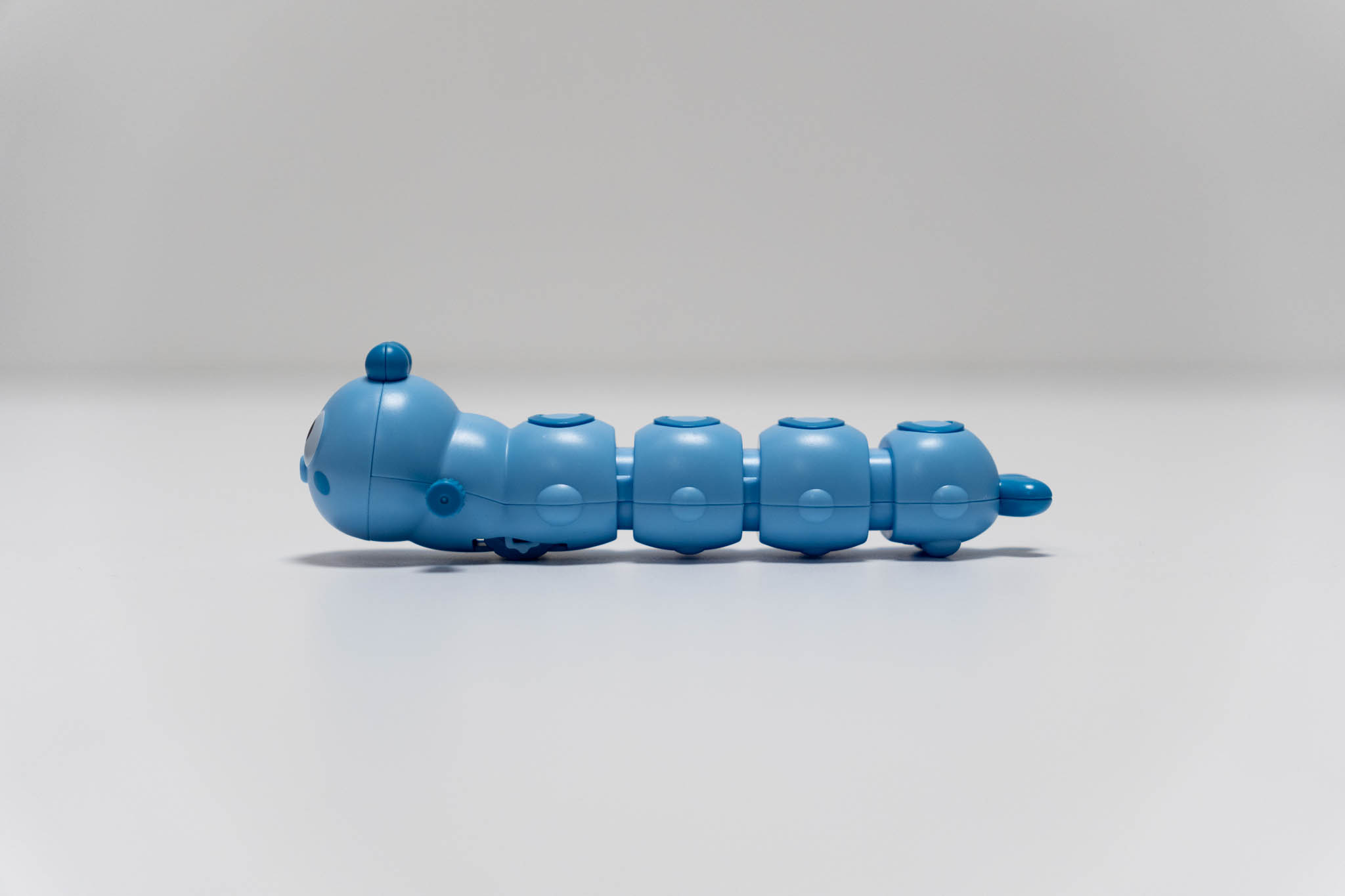 |
|---|---|
| Left View | Right View |
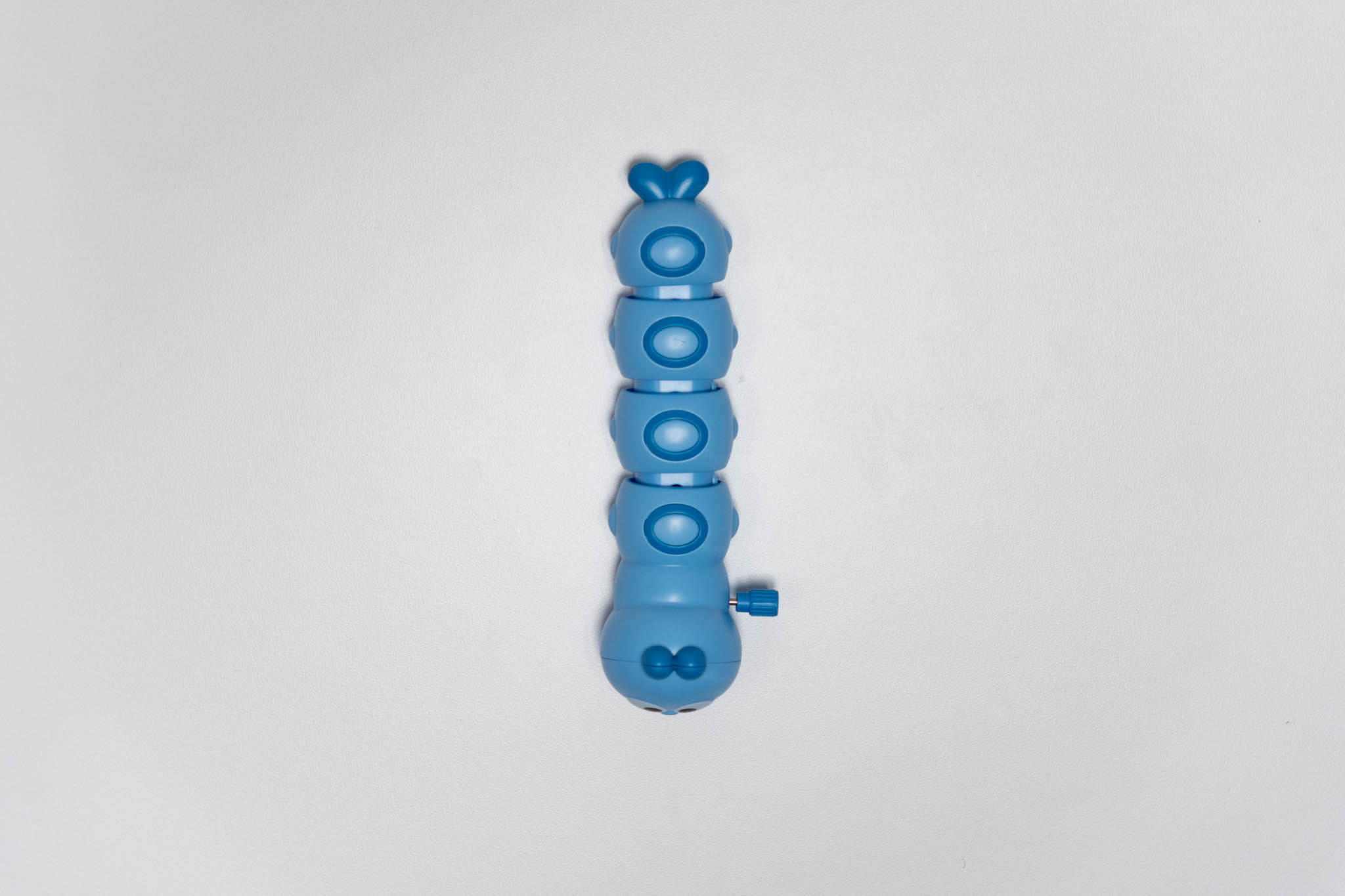 |
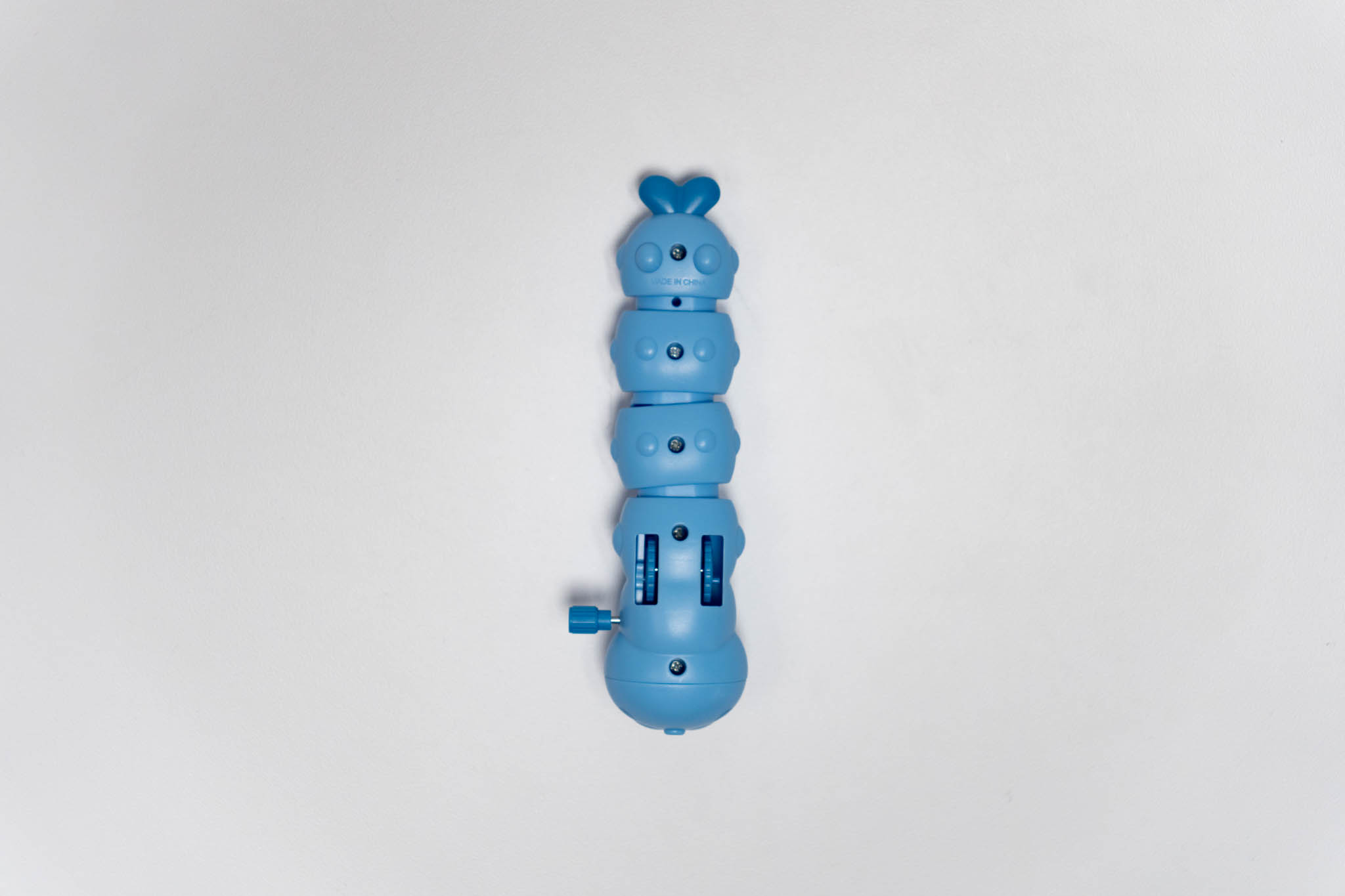 |
|---|---|
| Top View | Bottom View |
Before opening it up, I closely examined the toy. I don’t remember when it was my last time to open up a windup toy, but I imagine there is probably a spiral spring inside that is being twisted as I turn the windup knob, which stores the energy that will then be released backwards. I noticed there is a small piece of plastic stick attached to one of the wheels. For every turn the wheel rotates, the stick pushes one side of the immediately attached body segment, which makes that segment wiggle sideways. The last two segments near the rear end seem to move freely, so their movements mostly likely come from the segment before them.
Enough speculation. It’s time to open it up!
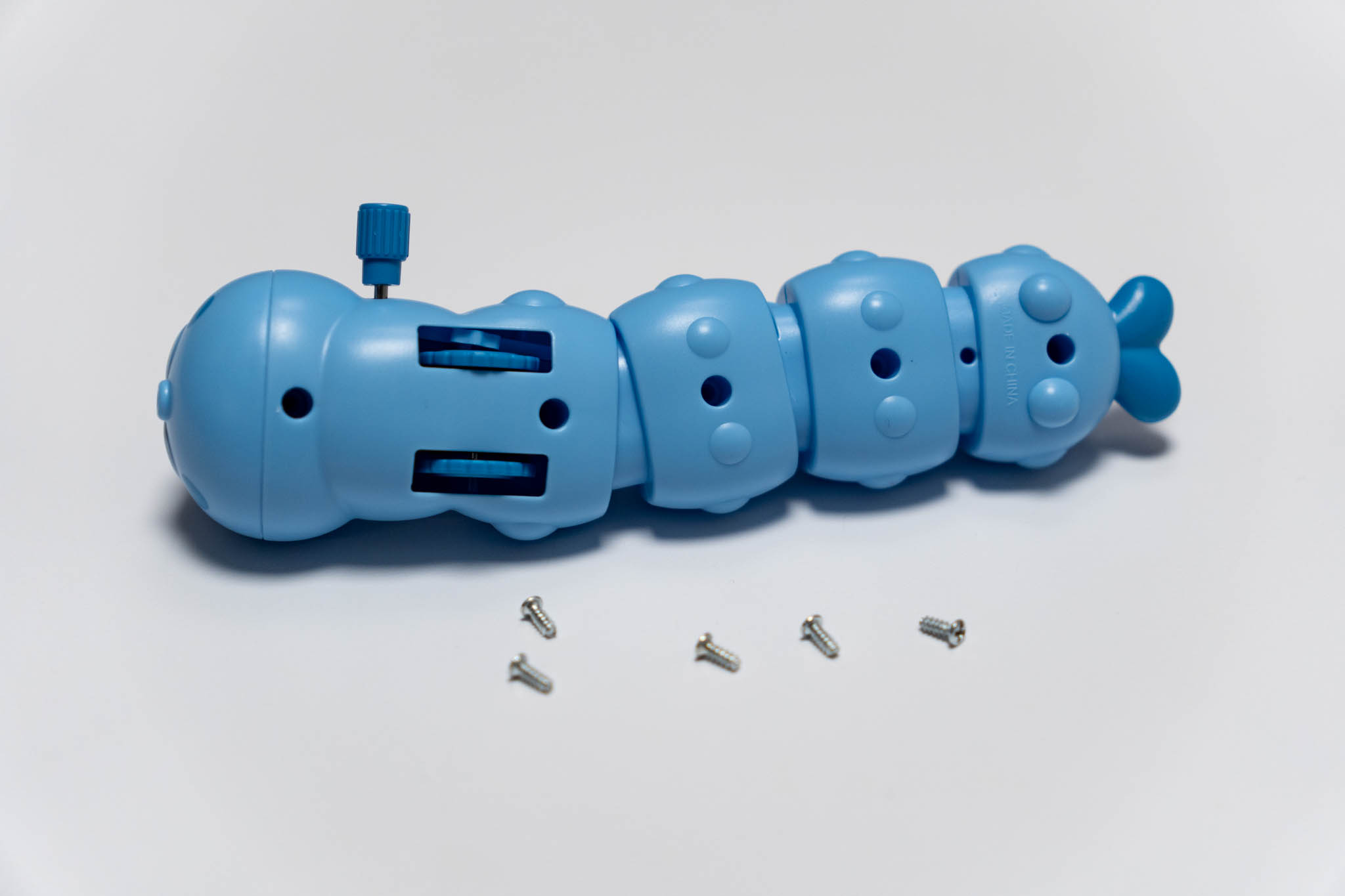
I started by removing all five screws from the bottom side of the body segments. It turned out all parts still seemed to be very much intact at this point.
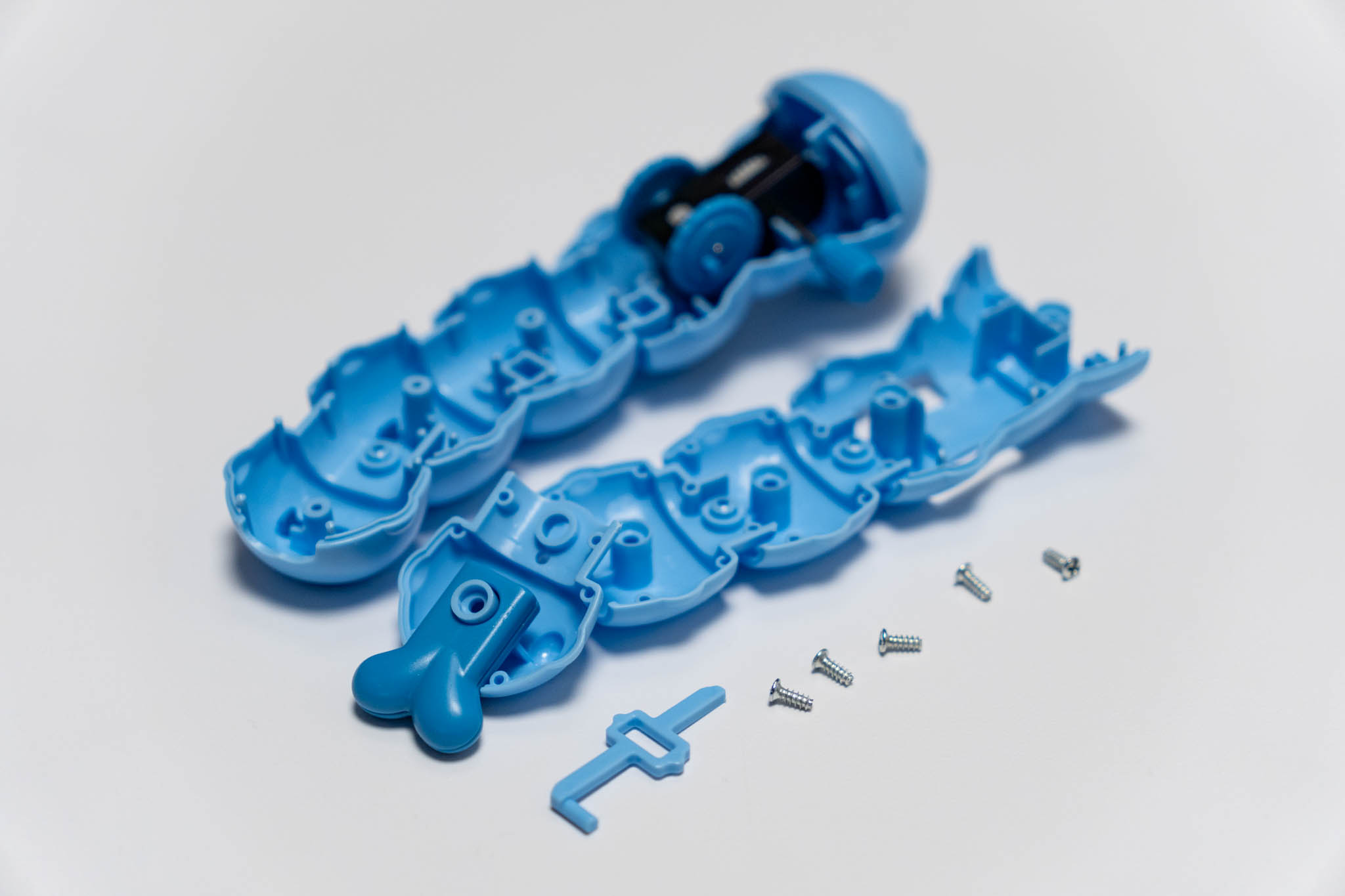
From the seam, I was able to split it into two parts.
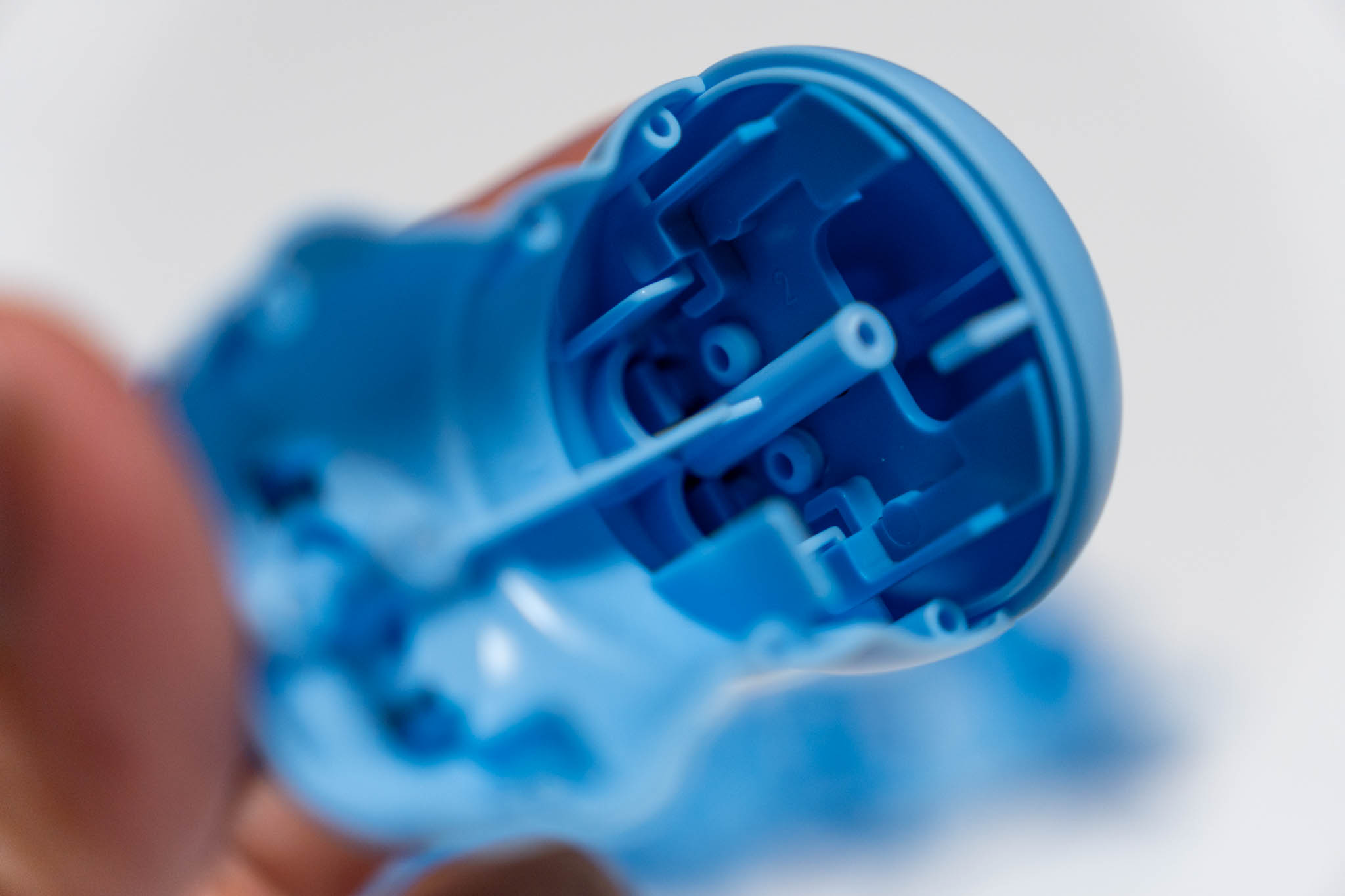
The head was a bit trickier. After fiddling with it a bit more, I was able to dissemble all components and organize them on a table.
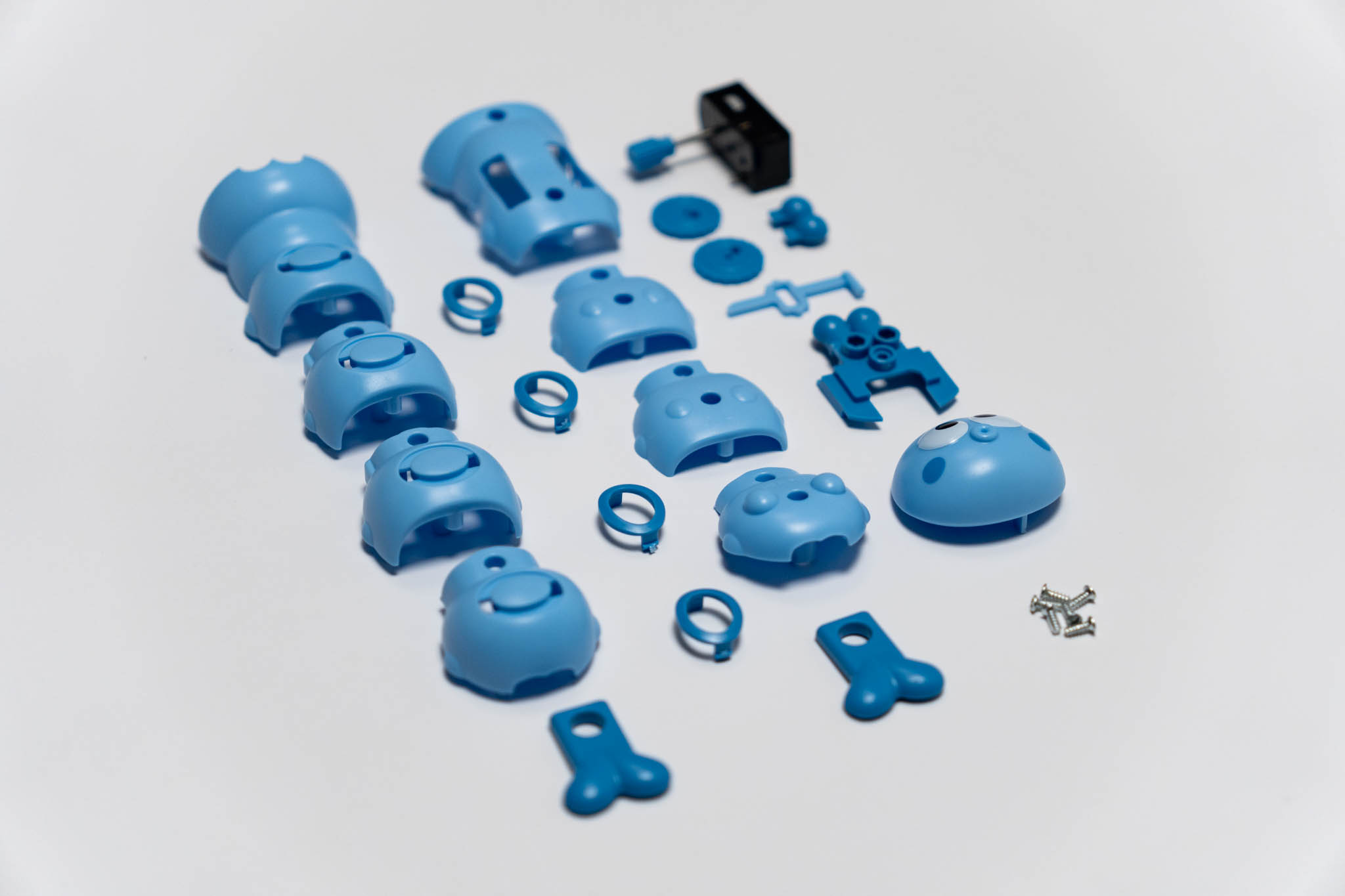
Below are all of its components with names that I gave them:
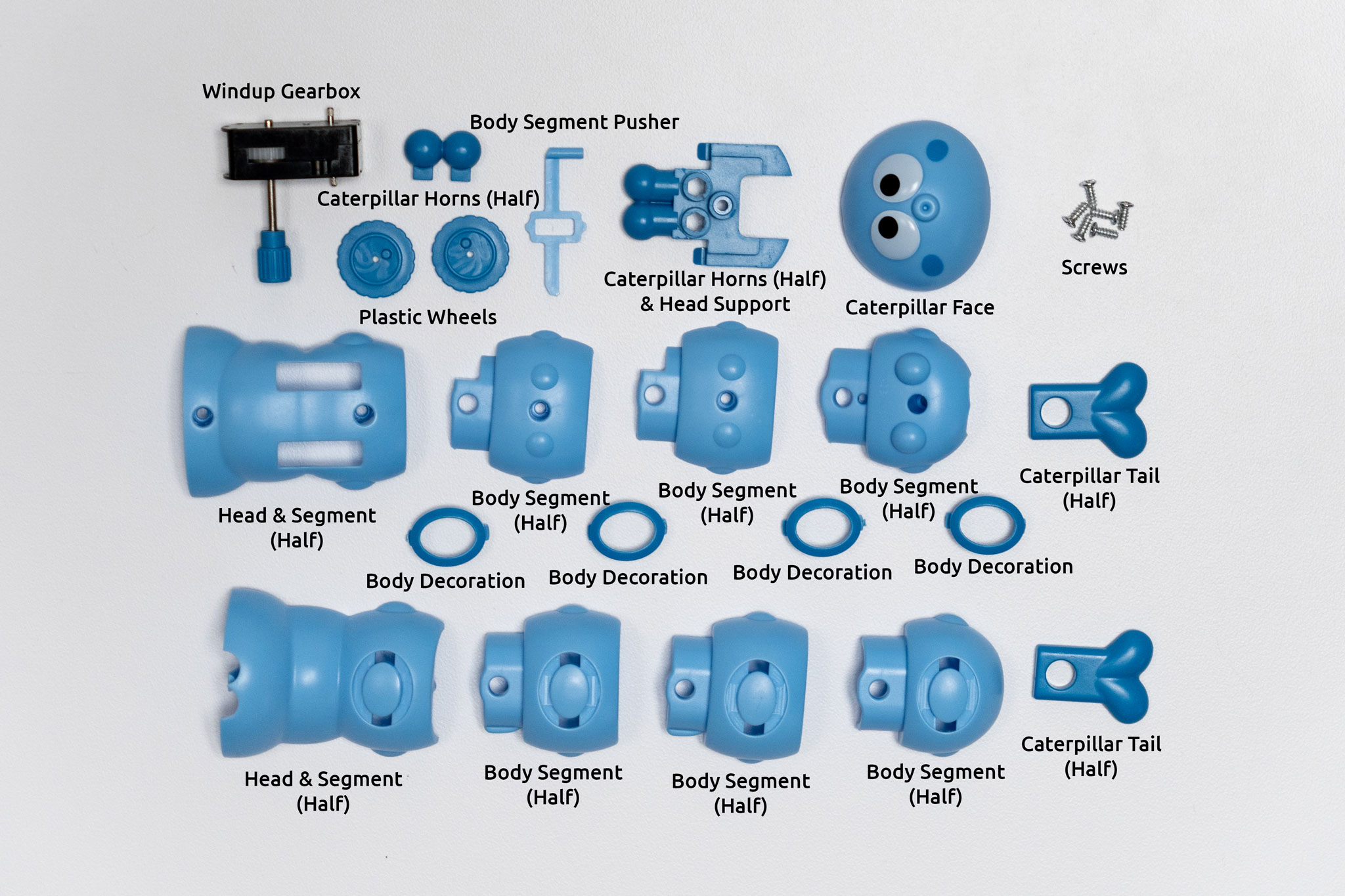
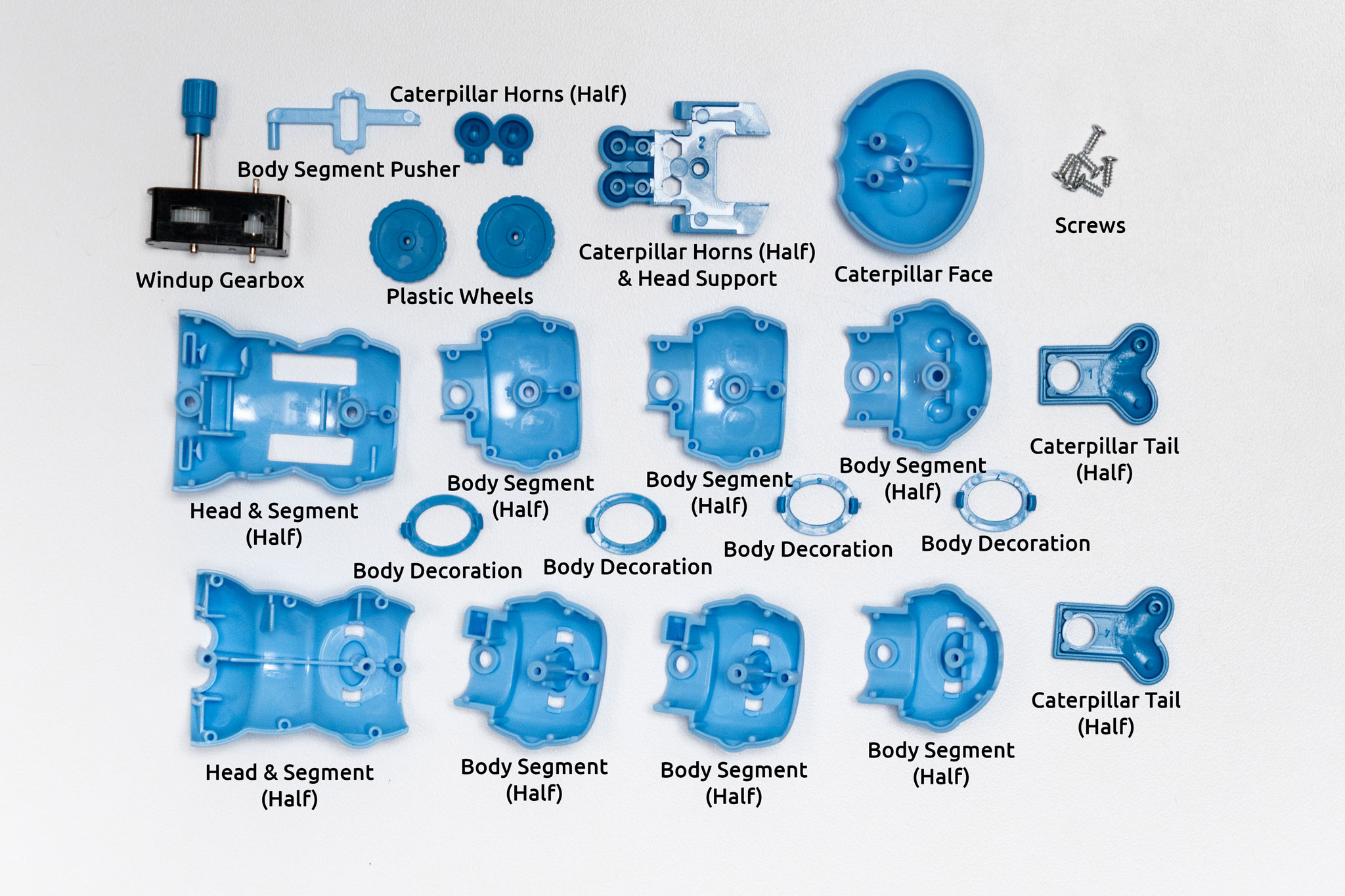
I took pictures of both sides of the components because the two sides were quite different from each other.
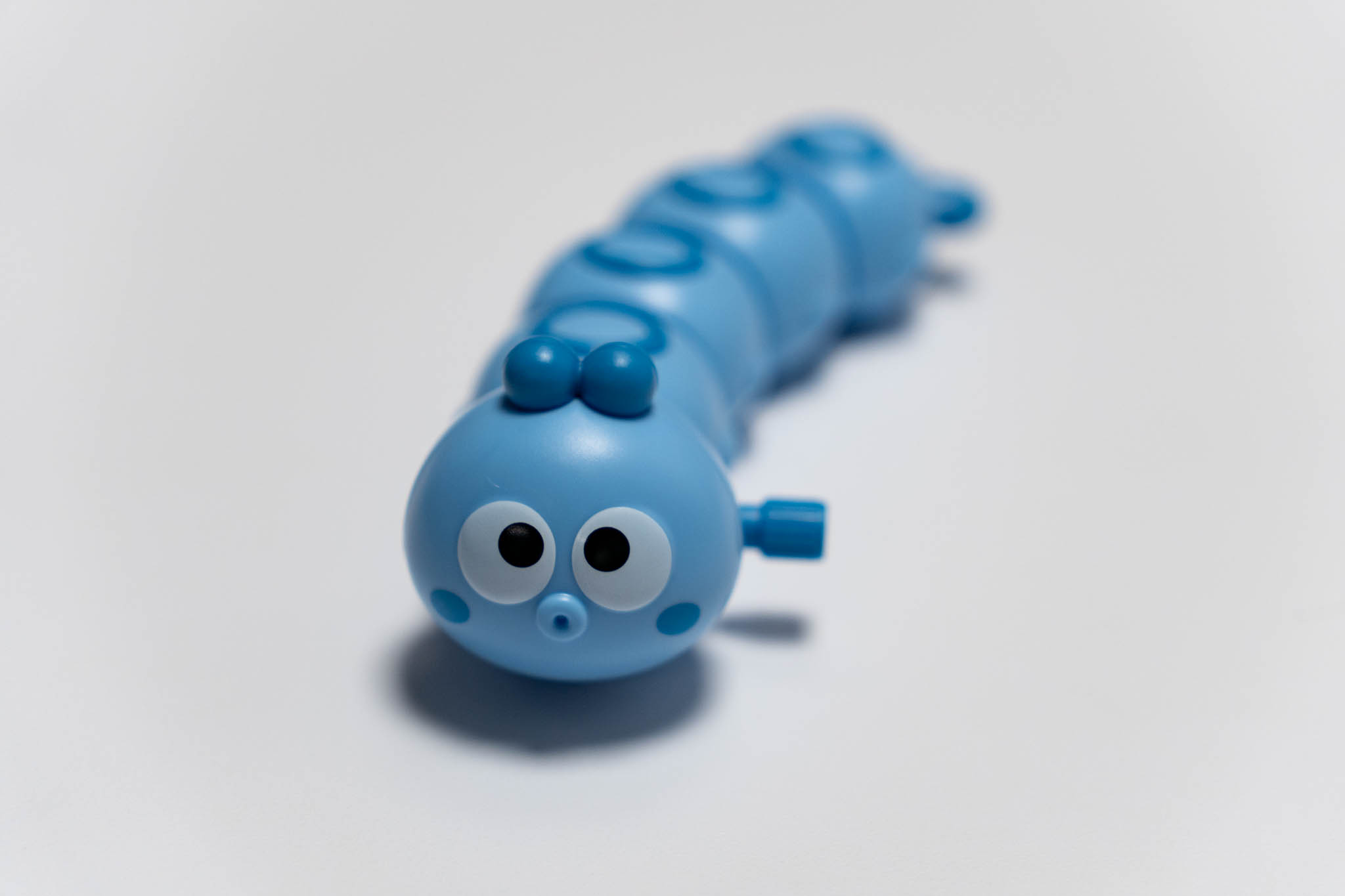
This last picture was taken after I reassembled the toy. Yes, I was able to put it back together and I couldn’t resist to take one more photo of this cute little caterpillar toy.
It was quite a fun activity. There were more components than I originally thought. For instance, I did not think too much about the two different colors present on the toy. It turns out each individual plastic piece is always in one color (except for the face, which appears to be painted). For example, the dark blue decoration rings are separate from the light blue body segments. I suspect that is because it is easier and more cost effective to make plastic pieces of the same color. Pieces of different colors are manufactured separately and then assembled together in a separate process. Also, I didn’t expect an enclosed windup gearbox. I think it might also have something to do with the cost. It is probably cheaper to incorporate standard windup gearboxes that are mass produced in millions of units. This strategy reminds me of modularity in computer programming, which helps programmers reuse useful code written by other programmers without understanding what’s happening under the hood. All that being said, in this class, I hope I will get to learn all the inner-workings of automatons, including any windup mechanism. Can’t wait to learn more in this class!